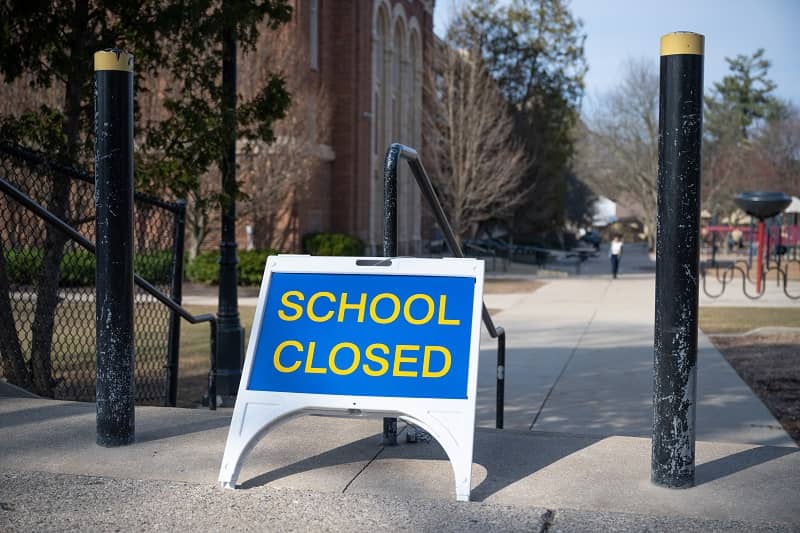By Erin Mae Shiffler
The Oregonian’s recent PolitiFact “Feds Don’t Think Local on School Lunch Ingredients” was prompted by Senator Ron Wyden’s complaint that “Oregon schools receive millions of dollars per year in federal school lunch assistance and yet they are required to spend that money almost anywhere but Oregon.” Politifact concluded that Wyden’s claim was “true” because “96% of food served in Oregon schools and purchased with federal dollars came from another state.” This is a false conclusion. Just because the “one definitive document” cited shows that most school food comes from out of state doesn’t mean it is required to come from out of state.
Oregon schools are not “required” to spend federal school lunch money outside Oregon. For the largest portion of their purchasing budget, schools must obtain food products through a competitive bidding process that also includes quality and nutrition standards.
Requiring food suppliers to bid makes sure schools do not favor suppliers unfairly. The bidding process allows schools to receive bids from local producers and suppliers throughout the country. Producers which meet quality and nutrition standards at the lowest cost will be chosen. Schools cannot afford to discriminate against out-of-state suppliers in favor of local food sources because they have a limited budget with which to feed the whole student population.
The other aspects of this process that may impede local suppliers are the nutrition and quality standards. These standards may increase the cost of food and make it harder for Oregon’s farms to produce items up to par while simultaneously underbidding producers in states like California. But standards are applied across the board, not just to Oregon suppliers. These standards include criteria such as: lunches must provide at least one-third of the recommended dietary allowances for key nutrients, they may have no more than 30 percent of their calories from fat, they must have less than 10 percent of calories from saturated fat, they must reduce sodium levels whenever possible, and they must increase fiber content whenever possible.
According to the article, Sen. Wyden assumes that local produce is more nutritious than food from out of state, but this may not be true. According to Cynthia Sass, Nutrition Director for Prevention magazine (January 2008): “A lot of people think fresh is best, but believe it or not, frozen produce is even more nutrient packed. That’s because the moment produce is picked, it starts to lose nutrients, but freezing slows that loss. A 2007 study found that vitamin C content of fresh broccoli plummeted 56% in 7 days, but dipped just 10% in a year’s time when frozen. In addition, the levels of disease-fighting antioxidants called anthocyanins actually increased after freezing.” This is just another reason why schools may choose to buy from outside Oregon.
A small portion of Oregon schools’ purchasing budget must be spent on specific items from the USDA’s program and is called “commodity money.” Commodity money is an extra $0.2225 per lunch served the previous school year. The bulk of the federally funded budget is non-commodity money that is reimbursed depending on the student’s status. For schools with less than 60% of children qualifying for free/reduced price lunches, the reimbursement rates are $0.26 for paid, $2.37 for reduced price, and $2.77 for free lunches. The rates are even higher in schools with more than 60% eligible.
According to a study of the commodity program done by the Food Research and Action Center, “when only expenditures on food are included in the calculation, the value of the commodities makes up about one-fifth of the federal resources spent on food for school lunch.” This means that four-fifths of the money is subject to the requirements above and do not need to be purchased from the USDA’s list of food. If a school found better quality items at lower prices through bids from Oregon suppliers, then they could spend about 80% of their federal funds here in Oregon.
If we are only spending 4% in Oregon, there are several possible reasons. It could be because the supply locally costs too much, lacks in quality, local suppliers are not bidding for the schools’ business, non-commodity money is following the commodity money to a single supplier to make buying easier, or the person at the school district in charge of buying food doesn’t have time to personally contact all of the small local providers that could supply cheaper and better quality food.
Oregon schools do not refuse to buy from Oregon suppliers because federal restrictions require them to buy outside Oregon or from any particular supplier. If we want to increase sales to local vendors, then local farms and food producers must offer bids for high-quality products at competitive prices. This scenario is incorrectly being used to promote the “buy local” mentality when in reality, buying local right now would only hurt the kids this program is supposed to feed because higher food prices would decrease the quantity that can be purchased. If our schools are buying food from anywhere but Oregon, don’t blame the federal government. Instead, figure out why Oregon suffers from a lack of locally available quality and low-cost food options.
Erin Mae Shiffler is a research associate at Cascade Policy Institute, Oregon’s free market public policy research organization. She is a student at Brigham Young University-Idaho.











